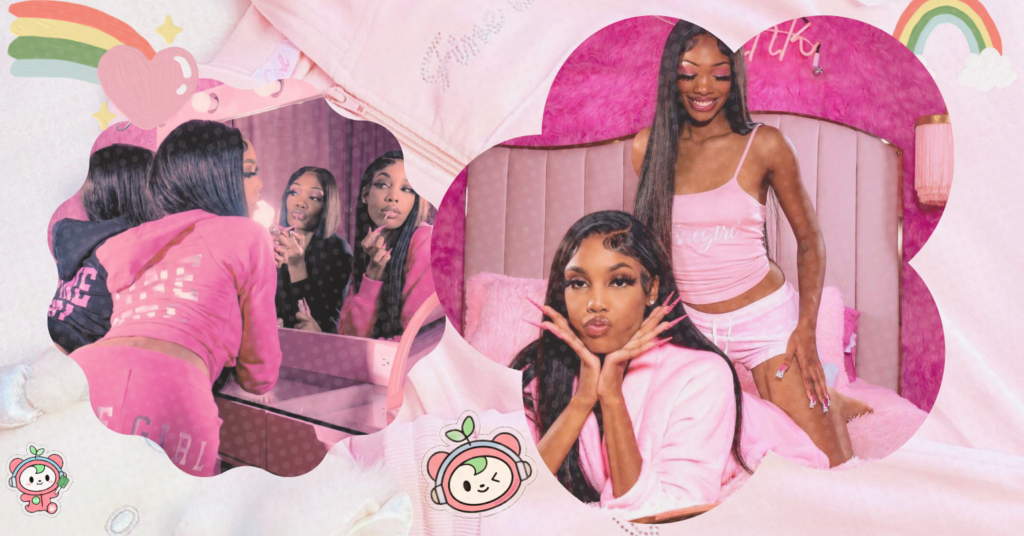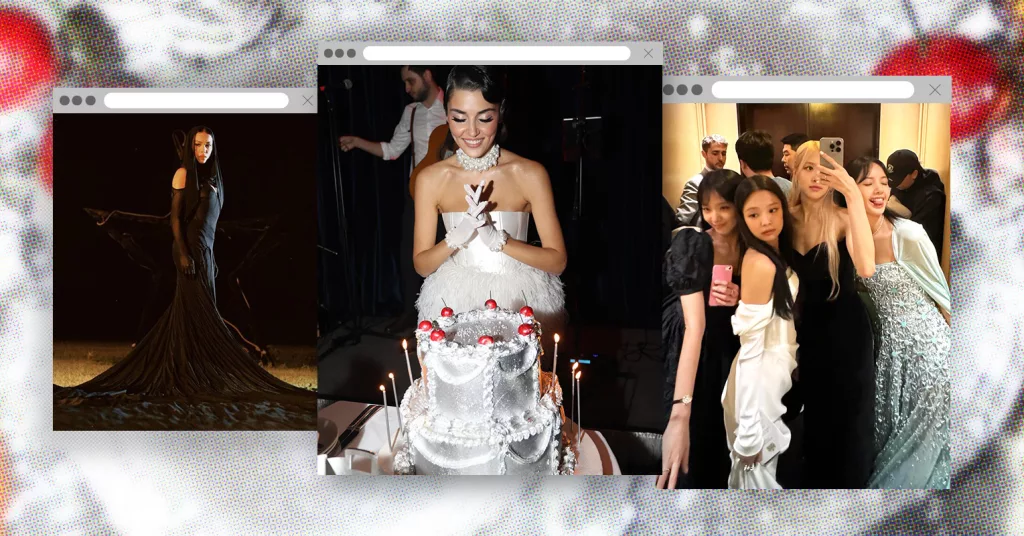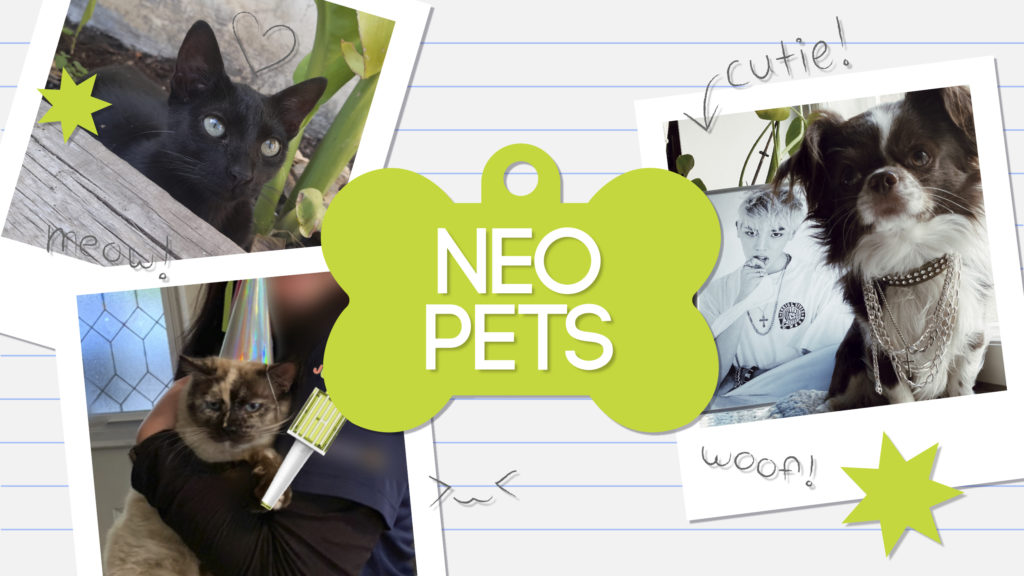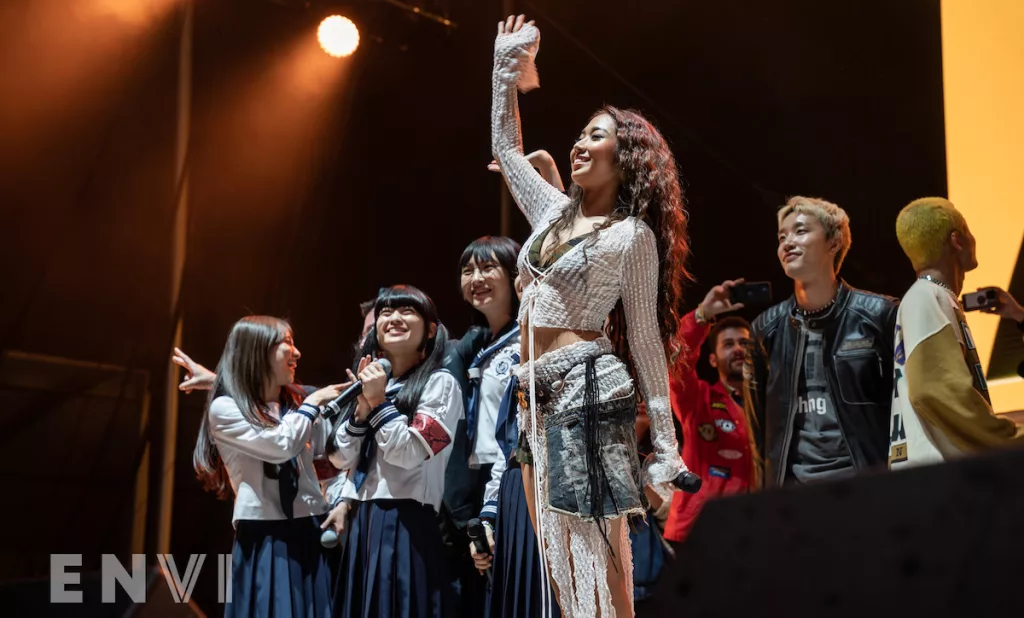Sanrio’s popularity has a profound influence on style and color among Black girls and women. The brand’s character designs, countless collaborations, and cuteness factor provide a positive outlet for Black creativity to thrive. Another reason why Sanrio holds significance is due to the shared nostalgia many fans feel for the brand. Its longevity allows enjoyers to remain close with a factor of their childhoods. This nostalgia, the cute characters of Sanrio, and the lively social media presence surrounding them creates a safe outlet for Black women to grow closer to their inner child.
@leanchihiro certified hello kitty girl since 2006 wbu? 🎀 #hellokitty #girl #pink #pinkaesthetic #hellokittygirl #pinkcore #kawaiiblackgirls #fyp #foryou #cute #pourtoi #viral #sanrio #relatable ♬ GO – ︎︎︎
In Nostalgia
With early 2000s culture taking over our screens on a near daily basis, the resurgence of fashion from popular shows like Totally Spies, That’s So Raven, Bratz, and As Told By Ginger have also made their way to many Pinterest boards. Recently, vintage photos of Black women interacting with brands like Sanrio have been unearthed as well, which is rare in of itself.
Many of us have seen photos of Ananda Lewis wearing Hello Kitty-printed clothing from 2004 for the mascot’s 30th anniversary party. There has also been a rapid spike in popularity of the 2006 anime NANA, with a new generation thrusting themselves into the world of Y2K, punk fashion, and Vivienne Westwood. The constant reappearance of velour tracksuits, animal print, lip gloss, and flip phones accompanies the trend of people re-discovering (and reclaiming) media they grew up with or used to love.
Now more than ever, the nostalgic past is seen through rose-tinted glasses, and Sanrio’s most recognizable mascot is at the helm of the portal. The internet’s discovery of old Sanrio artifacts, such as episodes from old animations, toys, or collectible accessories, adds to the fun of the exploration of nostalgia. Providing the public with a safe outlet for healthy age regression allows people to lean into aspects of their childhoods that brought them peace and relaxation in times of stress.
This resurgence, however, also brings forth the conversation of Black women and girls depicted in the world of television and film. The aestheticization of Black women in graphic tees and hyper-feminine colors generates a larger issue regarding the way Black female characters are written in popular media. In shows like The Proud Family and As Told By Ginger, Black girls — specifically darker-skinned Black girls — weren’t allowed to indulge in more cute or feminine forms of fashion without being the butt of a joke. In contrast to this, with the help of brands like Fine Girl and Sanrio, today’s Black girl and woman can embrace parts of their childhoods that they had previously neglected or been kept away from.
In Cuteness
The virtue of cuteness in society has shown to stand the test of time, as nostalgia and a longing for one’s youth is often revered throughout multiple cultures. As such, nostalgia has remained popular as a source of marketability and success within the fashion world. But why is this a good thing for Black women specifically, and what does it say for the future of our fashion?
As we all know, cuteness and nostalgia sells. In the past few years, remakes of popular shows from decades past, like the Barbie film and the upcoming Totally Spies reboot, have permeated our screens as we long for times past. Black female characters on television, additionally, are being written in a variety of different and introspective spaces, from Jessica’s Big Little World to Insecure. Being able to happily step into the past via any media is becoming extremely common in nature, as it creates a way for people to bring past elements into current trends.
For example, when speaking to the Fine Girl founders — who are Black women — about the importance of brands like theirs, they state, “Brands such as ours have allowed Black women to feel seen and included. Oftentimes Black women are forgotten about or misrepresented in fashion.” Without delving into the accompanying conversation regarding a Black womens’ supposed lack of desirability and Sanrio’s questionable depiction of Black people in the ‘80s, nostalgia (when done right) can provide visibility for people and factors that previously hadn’t been discussed. Similarly, Sanrio’s decision to collaborate with colors and brands that people grew up with, including Tamagotchi, Nike, and Dr. Martens, is equally strategic as it is refreshing.
(Sanrio) In Action
Style, for many people, is a multidimensional factor of life that doesn’t only exist in one trend or decade. As noted by fashion editor and brand consultant Mayra Peralta, “The Sanrio characters belong to a segment of childhood figures that nearly every Millennial or Gen Z can recognize; hence, it makes sense that the brand is picking up momentum through collaborations with fashion and beauty brands. Just this year, Sanrio partnered with Starface to launch a limited-edition collaboration. The items sold out immediately, which is a testament to the power these characters yield and explains why brands continue to tap into nostalgia to appeal to different demographics.”
Sanrio is one of few brands to master the art of catering to a trend without neglecting another, and nostalgia has shown to be one of many areas of expertise for the brand. Knowing when and how to refer to the past is equally refreshing as it is important. Black girls who weren’t given the chance to exist in hyper-feminine spaces or participate in fashion trends can now experiment to their heart’s content. Everyone deserves a chance to freestyle and style freely.
For Black Girls
As people continue to take leaps of faith to share their interests with the world, the influence of Black women should not be disregarded. Sanrio’s unmissable success has allowed Black women of all ages to embrace each side of themselves through cuteness, simplicity, and style.
The mission of Sanrio to spread cuteness and comradery is stronger than ever, and Black women and girls around the world are ready to come along for the ride. We don’t have to be strong, harsh, or sassy all of the time. We can be cute, effervescent, and sweet, too. As the women behind the Fine Girl brand strongly stated, in regards to the importance of Black womens’ freedom in fashion and color, “It’s extremely important, Black women will forever be the blueprint. Although we are often overlooked, the trends that we create live on through generations.”
Check out Part One of EnVi’s Black Girls in Style: The Season of Sanrio here!




